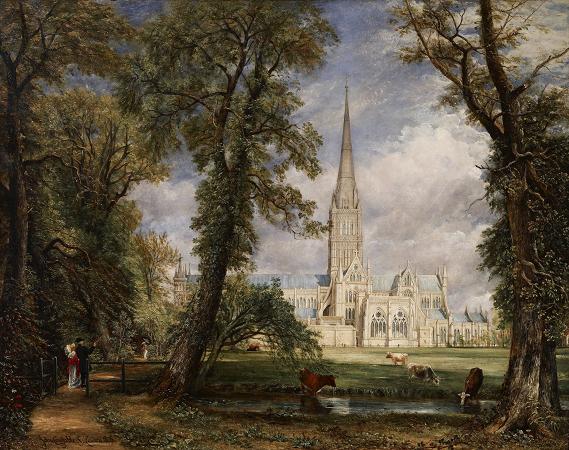Landscape with Fog. Fog is a visible aerosol consisting of tiny water droplets or ice crystals suspended in the air at or near the Earth's surface. Fog is often portrayed in art as a means to evoke mood and atmosphere. Artists use it to create a sense of mystery, tranquility, or melancholy, employing soft edges and muted colors to convey the obscured landscapes and ethereal quality of fog. Impressionist painters like Claude Monet and J.M.W. Turner captured fog in their works, highlighting its ability to transform familiar scenes into dreamlike visions. Fog can be considered a type of low-lying cloud usually resembling stratus, and is heavily influenced by nearby bodies of water, topography, and wind conditions. In turn, fog affects many human activities, such as shipping, travel, and warfare. Fog appears when water vapor condenses. During condensation, molecules of water vapor combine to make tiny water droplets that hang in the air. Sea fog, which shows up near bodies of saline water, is formed as water vapor condenses on bits of salt. Fog is similar to, but less transparent than, mist. The term fog is typically distinguished from the more generic term cloud in that fog is low-lying, and the moisture in the fog is often generated locally. By definition, fog reduces visibility to less than 1 km, whereas mist causes lesser impairment of visibility. For aviation purposes in the United Kingdom, a visibility of less than 5 km but greater than 999 m is considered to be mist if the relative humidity is 95% or greater; below 95%, haze is reported. See also: Cloud physics Minute droplets of water constitute this after-dark radiation fog, with an ambient temperature of −2 °C. Their motion trails are captured as streaks. A close-up view of water droplets forming fog. Those outside the camera lens's depth of field appear as orbs. Fog forms when the difference between air temperature and dew point is less than 2.5 °C. Fog begins to form when water vapor condenses into tiny water droplets that are suspended in the air. Some examples of ways that water vapor is condensed include wind convergence into areas of upward motion; precipitation or virga falling from above; daytime heating evaporating water from the surface of oceans, water bodies, or wet land; transpiration from plants; cool or dry air moving over warmer water; and lifting air over mountains. Water vapor normally begins to condense on condensation nuclei such as dust, ice, and salt in order to form clouds. Fog, like its elevated cousin stratus, is a stable cloud deck which tends to form when a cool, stable air mass is trapped underneath a warm air mass. Fog normally occurs at a relative humidity near 100%. This occurs from either added moisture in the air, or falling ambient air temperature. However, fog can form at lower humidities, and can sometimes fail to form with relative humidity at 100%. At 100% relative humidity, the air cannot hold additional moisture, thus, the air will become supersaturated if additional moisture is added.
more...







